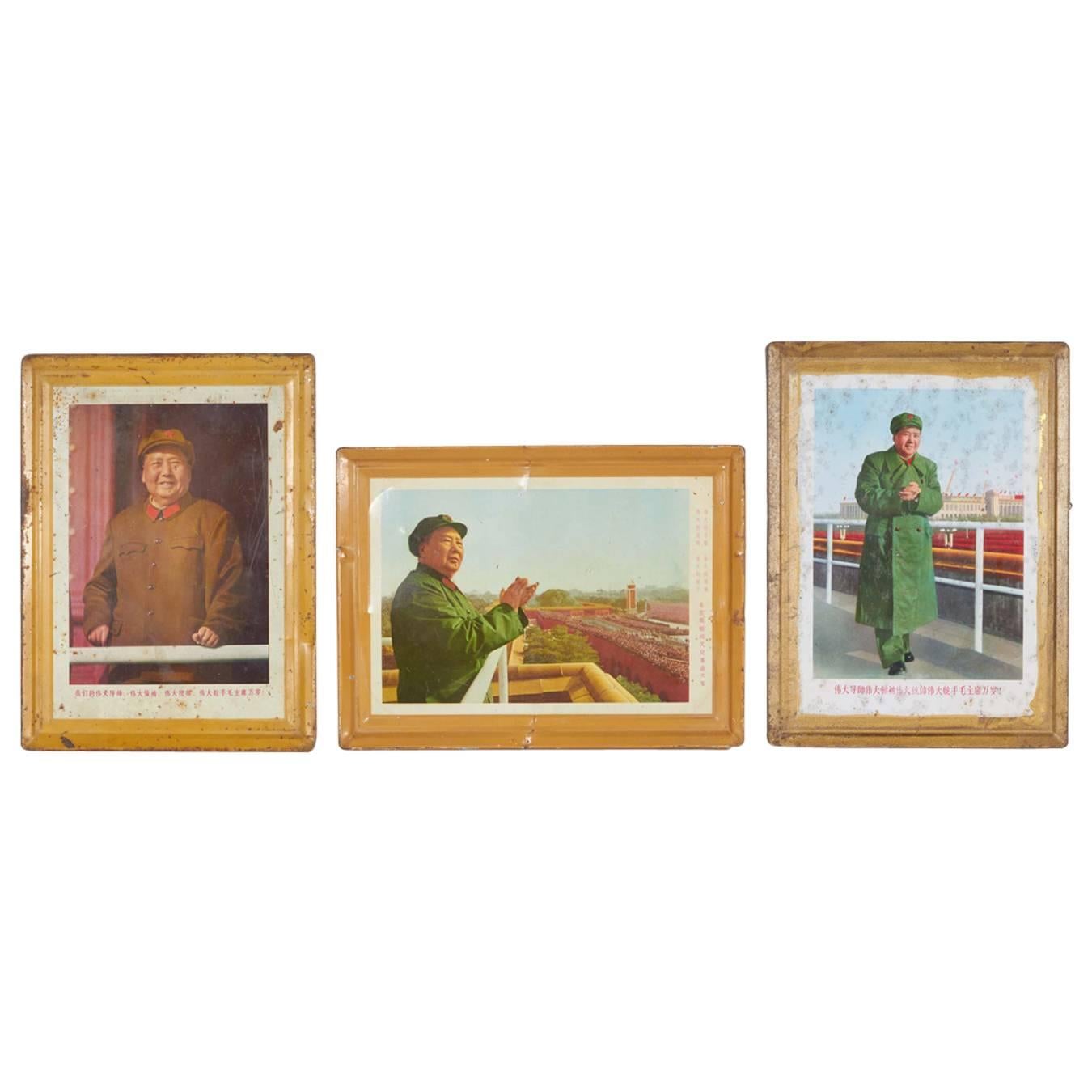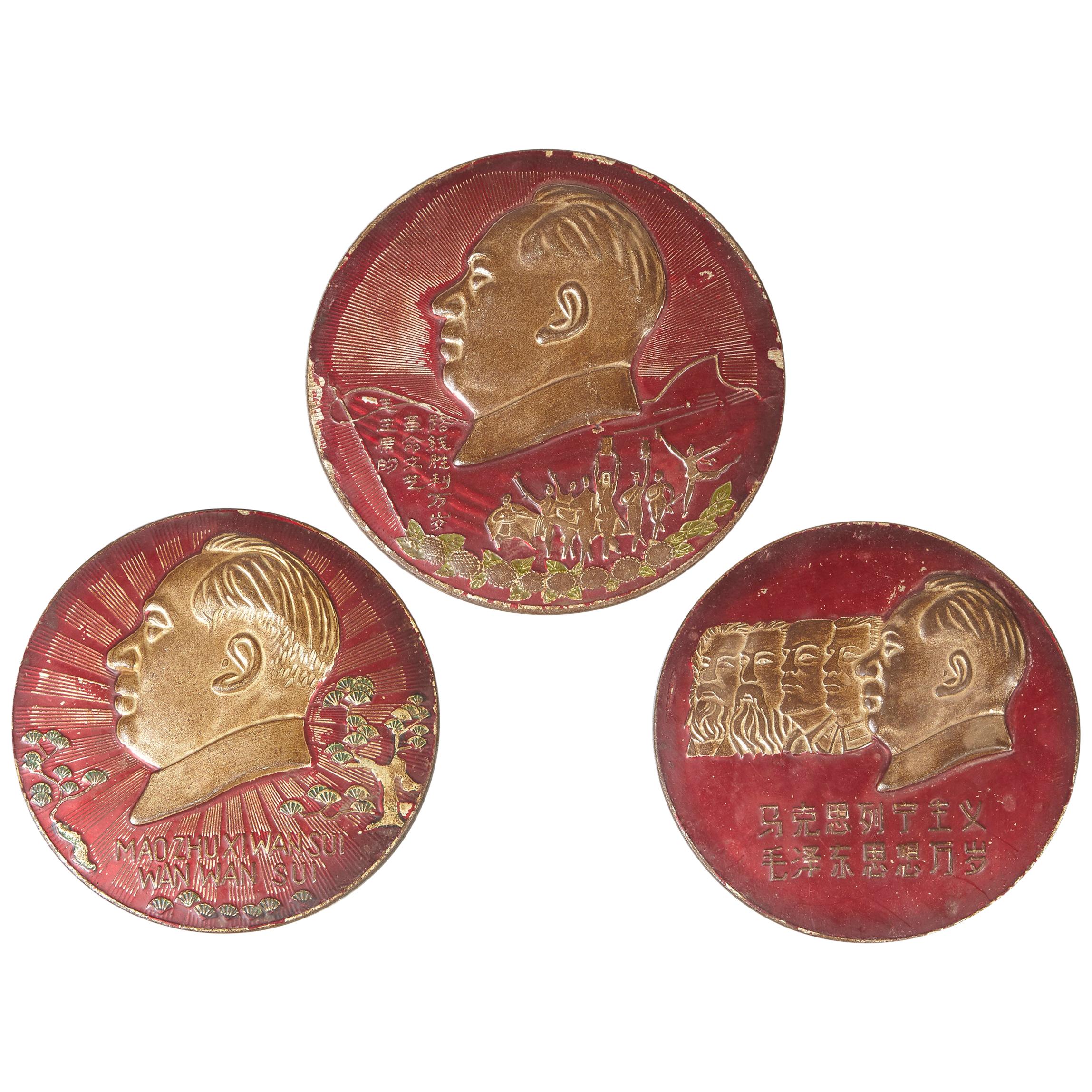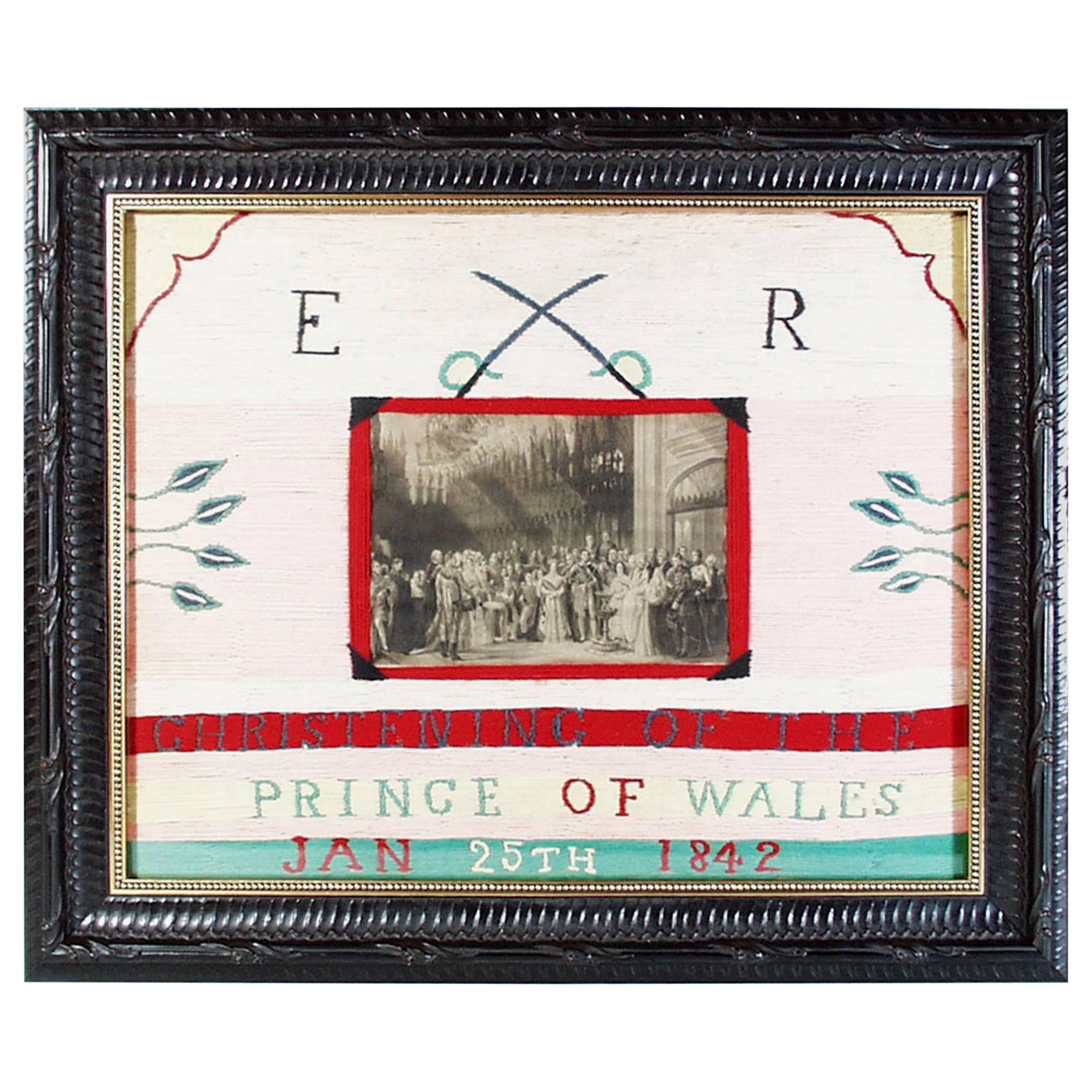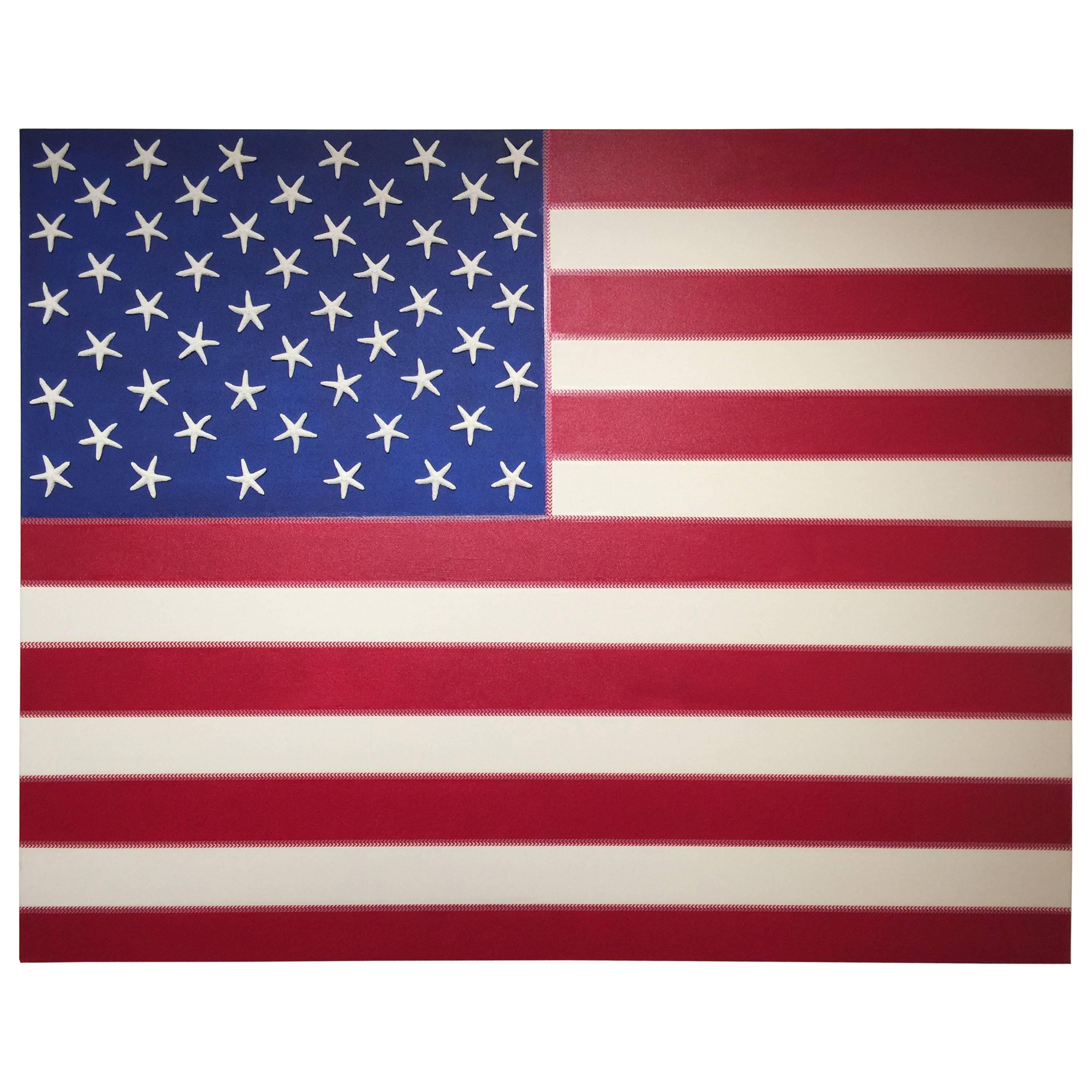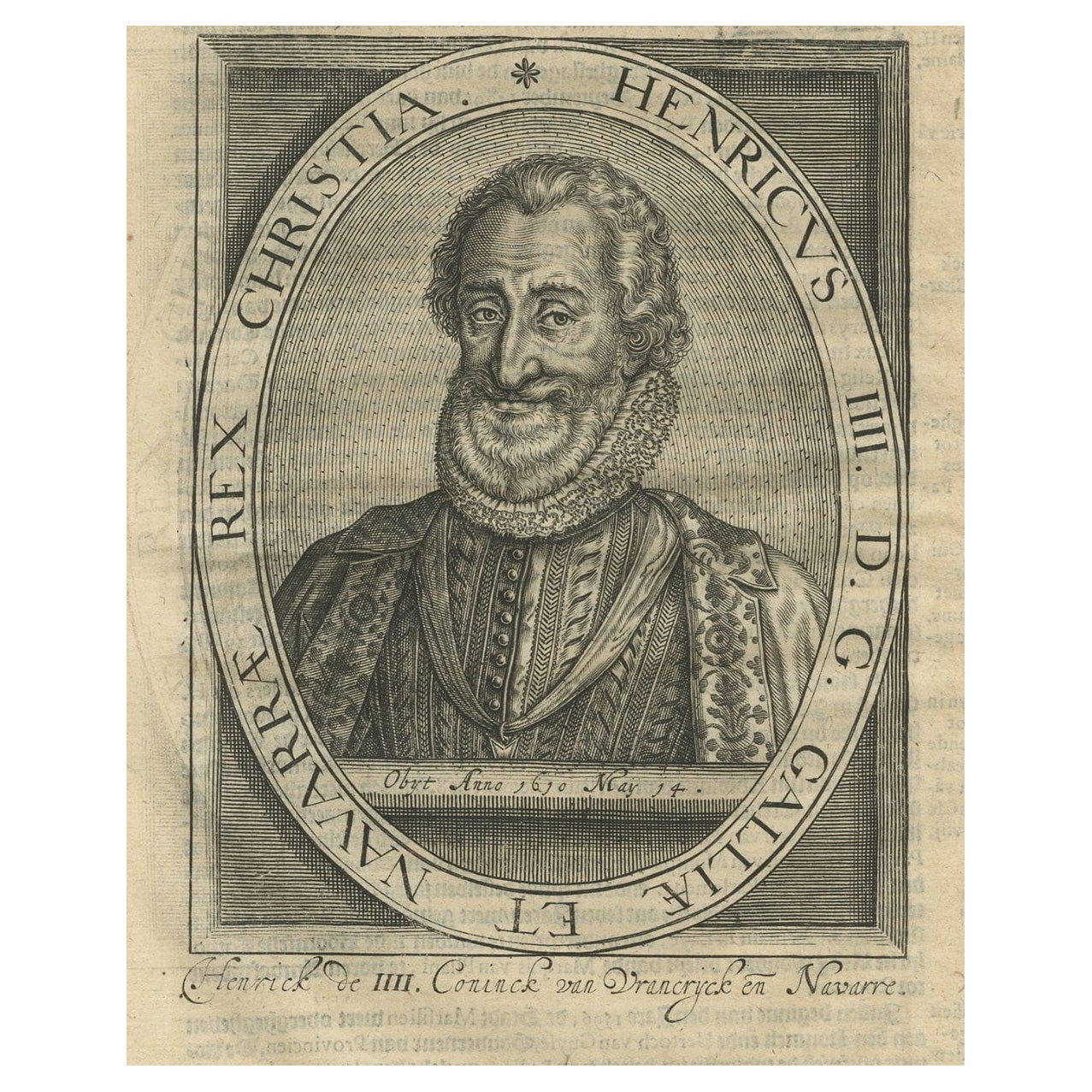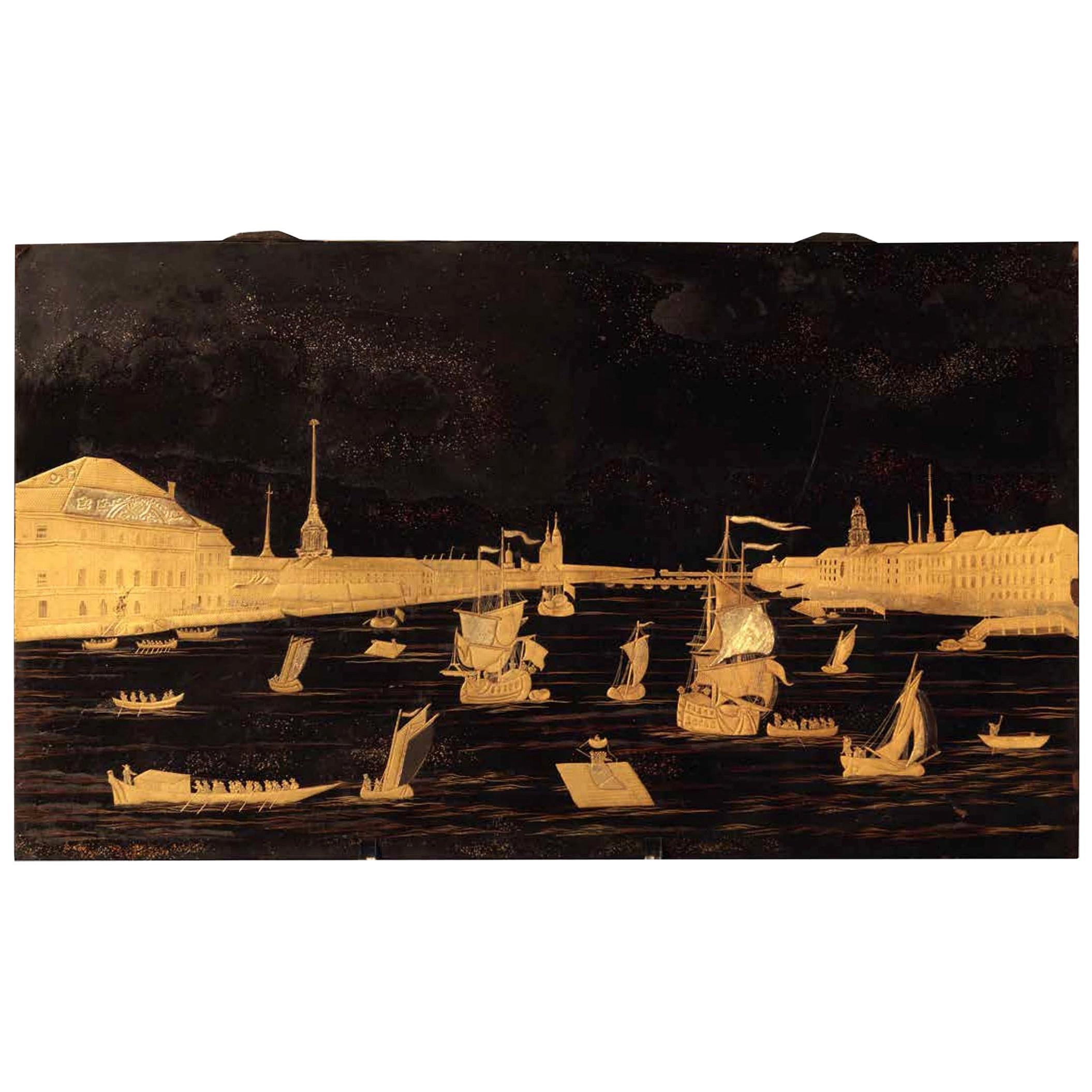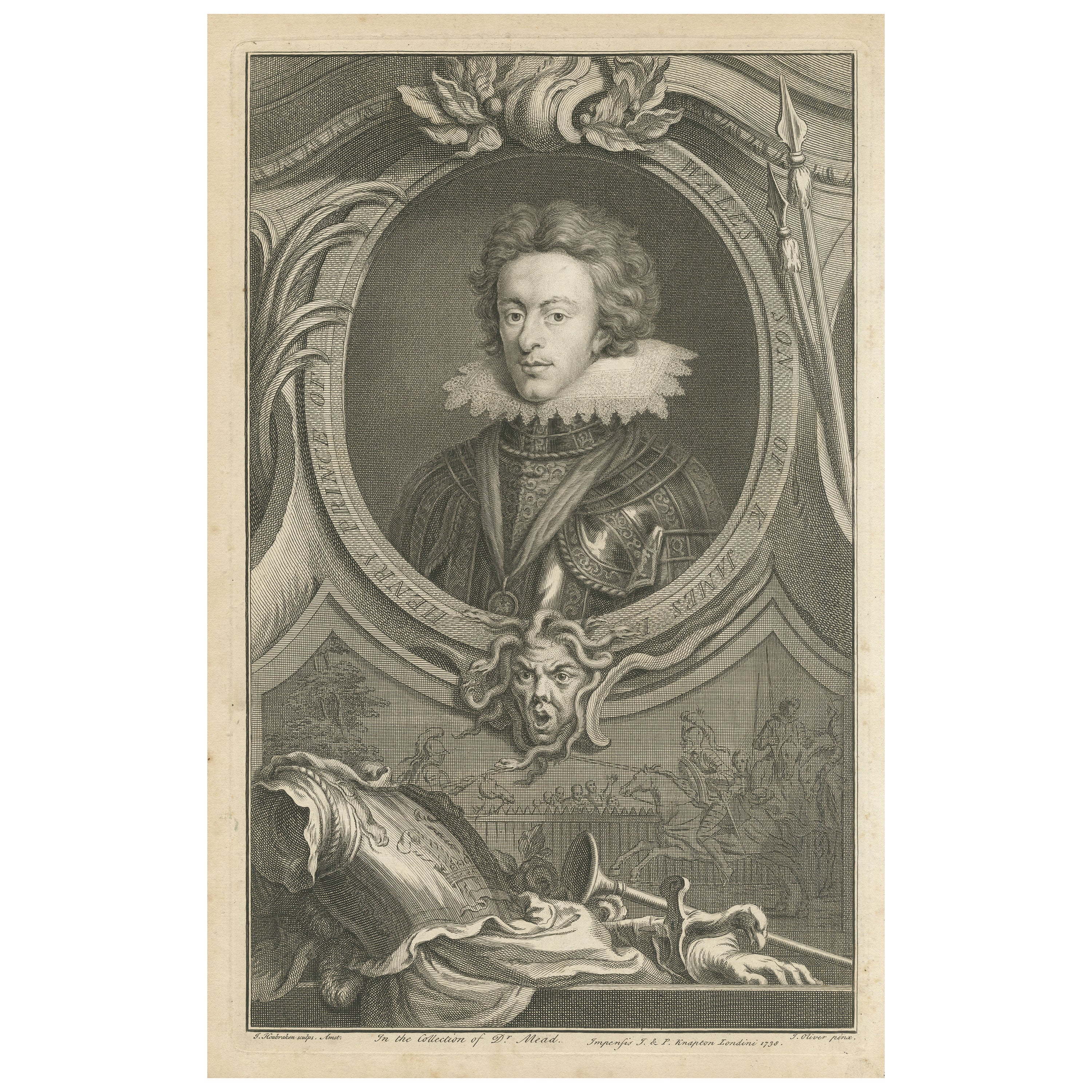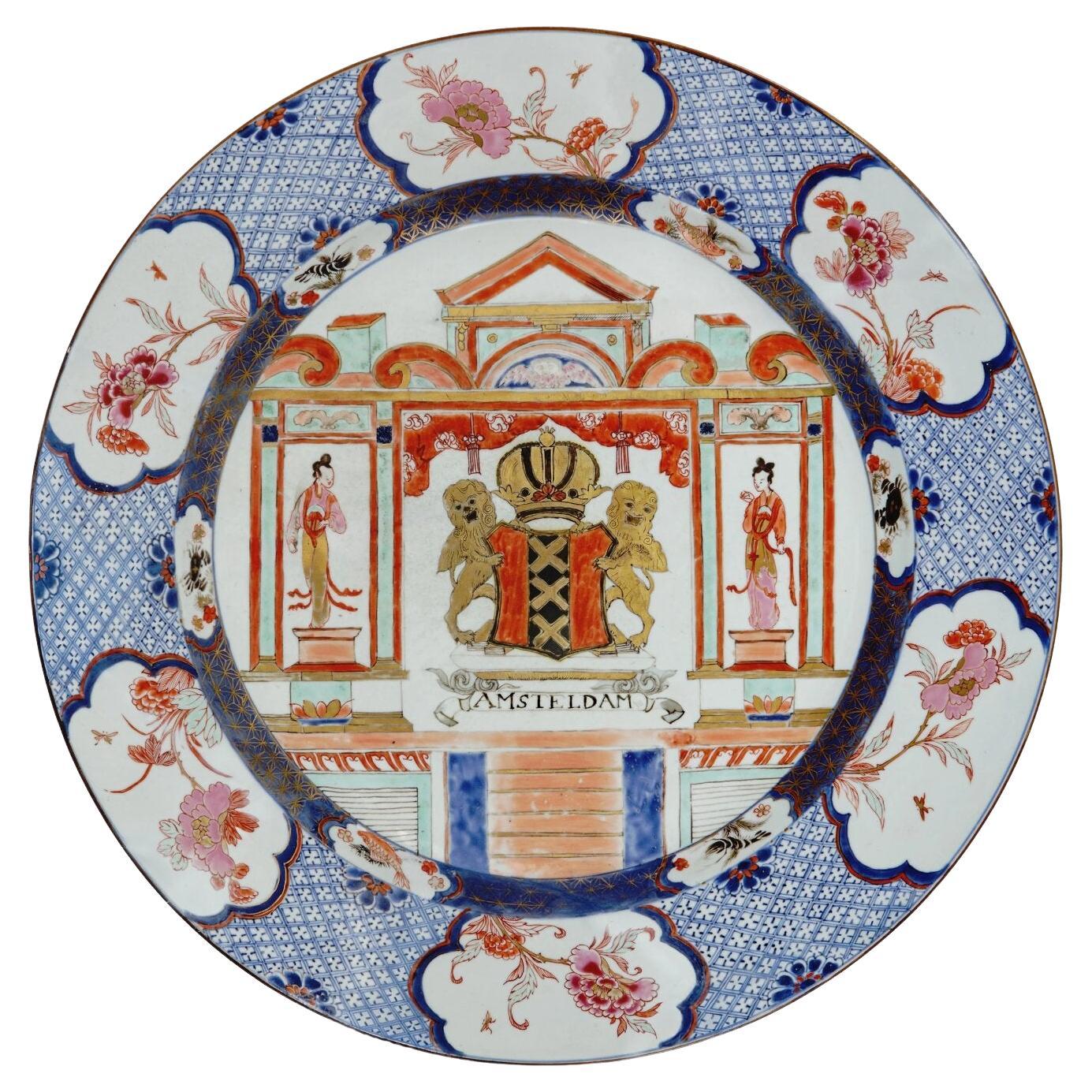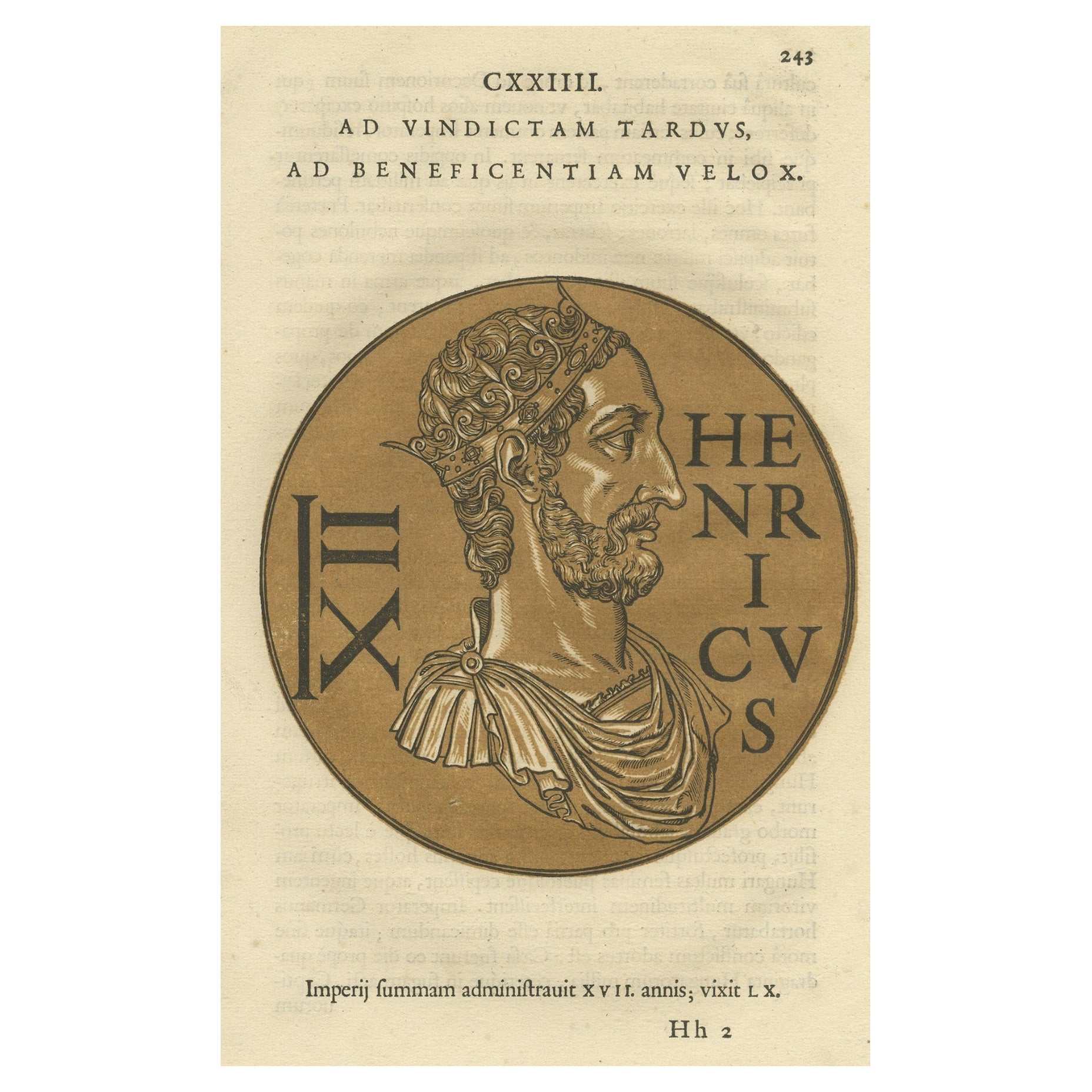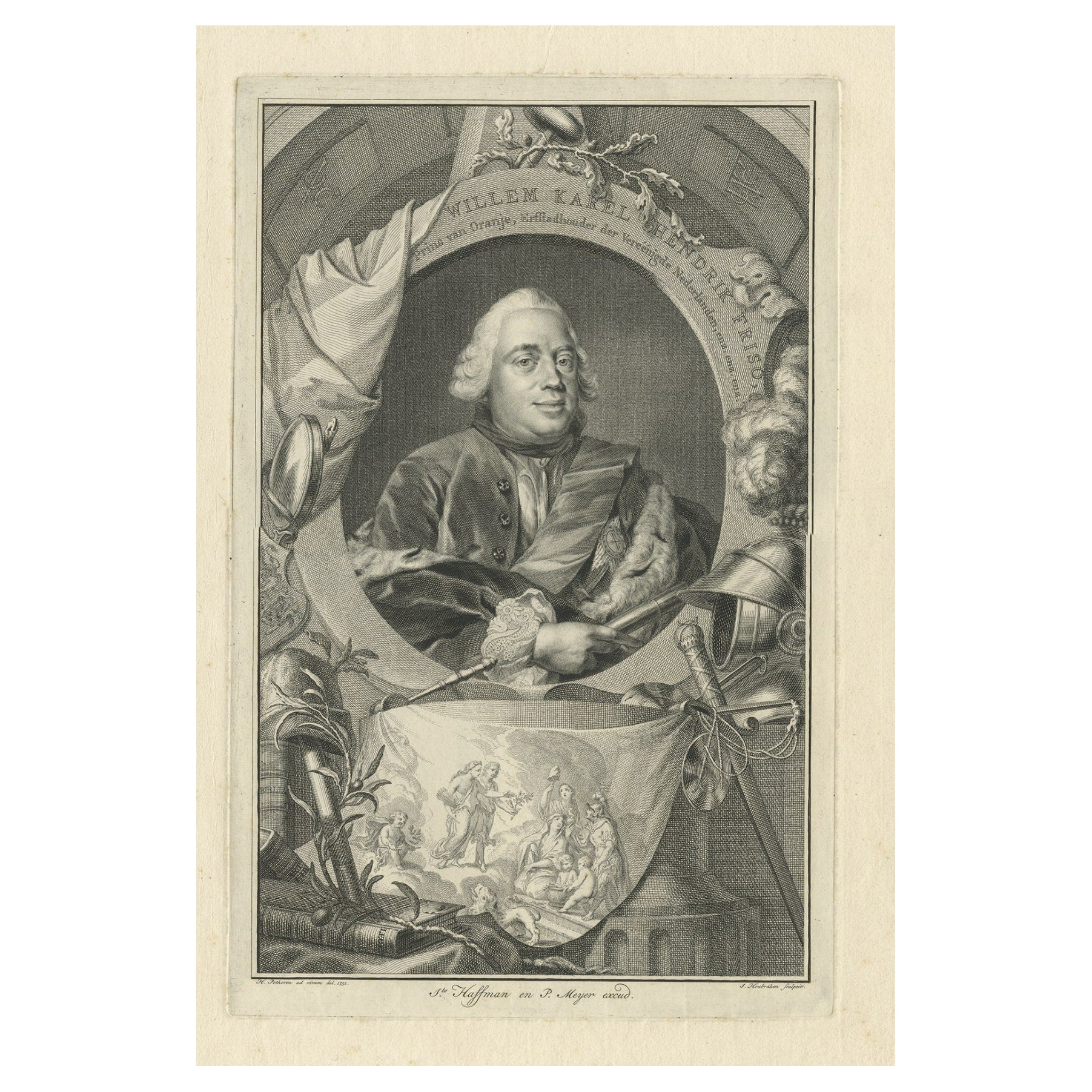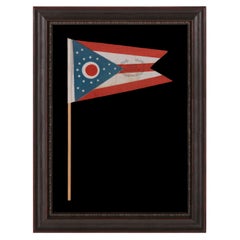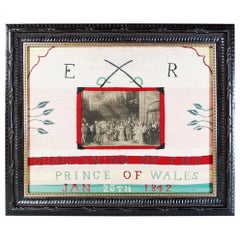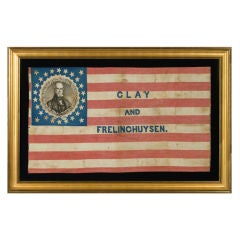
Extremely Rare Henry Clay Campaign Parade Flag With Portrait
View Similar Items
Want more images or videos?
Request additional images or videos from the seller
1 of 7
Extremely Rare Henry Clay Campaign Parade Flag With Portrait
About the Item
26 star American parade flag, printed on cotton, made for the 1844 campaign of Henry Clay. Clay’s portrait appears inside a wreath of oak leaves and acorns, which is encircled by a gear cog. Outside this is a wreath of 22 stars, with a flanking star in each corner of the brilliant, royal blue canton. Printed within the 2nd, 3rd, and 4th white stripes are the words “Clay and Frelinghuysen”.
Clay’s campaign focused on the creation of a national currency, promotion of agriculture, and protection of American industry through such devices as protective tariffs. The gear in the canton represents the importance of the advancement of America into the industrial age and less reliance on foreign goods. As it turned out, this issue was not as important to Americans as westward expansion, which was the platform of the successful presidential candidate, James Polk.
It is interesting to note that a nearly identical 1844 flag exists with Polk’s portrait in the canton instead of Clay’s. Polk’s running mate, George M. Dallas, a Philadelphia-born attorney and Princeton graduate, also supported the expansionist platform. Dallas County, Texas, was afterwards named for the vice president (though the origin of the name of the City of Dallas is a subject of some controversy; it had reportedly been called Dallas as early as 1842). Though Texas would not become a state until 1845, a larger star was added to the Polk version of this parade flag, just outside the canton, to represent Polk’s staunch support for Texas statehood.
The Polk flag could, in fact, be a mockery of the Clay flag, ordered shortly afterward from the same maker. This is evidenced not only by the additional star modification, and also by the existence of fewer Polk versions of this flag, and fewer Polk flags of any kind in general. Only two Polk versions are documented in Threads of History (Collins, 1979, Smithsonian Press), as opposed to nine Clay versions, plus many Clay banners and other textiles. Since fewer political flags have typically survived from loser candidates (because they were discarded), it stands to reason that there should be fewer surviving examples from Henry Clay than there are for James Polk, but this is not the case. So it is probable that very few Polk flags were made, and possible that those that exist were ordered in response to the presence of so many Clay flags. This is simply a theory, however, as both Polk and Clay flags are extremely rare, and their numbers do not offer enough evidence to draw a hard conclusion.
It is interesting to note that the 1844 election was the first in which an incumbent president, John Tyler, sought nomination and didn’t get it, which made Polk the Democrat’s dark horse nominee. It is also interesting that Joseph Smith, who founded the Mormon Church in 1847, was the third candidate. No flags or textiles are known to exist from the Smith campaign.
The 26 star flag became official on July 3rd, 1837, after the addition of Michigan. It remained the official star count until 1845. The earliest known parade flags have either 26 or 13 stars, and were made within this 8-year period. Parade flags do exist from the 1840 campaign of William Henry Harrison, and while the Clay/Polk campaign was four years later, in 1844, this still means the Henry Clay campaign flags, while not the first, are still among the earliest printed parade flags known to exist. Both the Clay and Polk versions of this example are uncommonly large for printed flags, and are also among the very best examples from a folk art perspective, with their bold, rather funky, wreathed portraitures, fanciful star patterns, and elongated proportions.
Biographical Information on Clay and Frelinghuysen: Henry Clay was born in Virginia on April 12th, 1777, about 2 months before the Stars & Stripes was adopted as the American national flag (June 14th). He studied law at Richmond and moved to Kentucky to practice. In 1806, Clay became a U.S. Senator, even though he was actually younger than 30 years old, the minimum age by constitutional law. This was the beginning of a nearly uninterrupted 46-year term in the House and Senate, where he served as both Speaker and Chairman, respectively. He also served as Secretary of State for John Quincy Adams. Clay ran unsuccessfully for the presidency three times. He ran as a Democratic Republican in 1824, then as a National Republican in 1832, and as a Whig in 1844. He afterwards returned to the Senate, which he served until his death in 1852.
Theodore Frelinghuysen was born in Franklin, NJ in 1787. Before he ran for vice president, he was an attorney, then a U.S. Senator serving New Jersey, then Mayor of Newark, then Chancellor of New York University. In 1850 he became President of Rutgers College, and remained in that position until his death in 1862. His grandson was Henry Cabot Lodge, Jr.
Mounting: The flag has been hand-stitched to 100% cotton, black in color. The cotton was washed to remove excess dye, and an acid-free agent was added to the wash to further set the dye. The flag was then placed in a gilded, French molding of exceptional quality. The front is U.V. protective acrylic.
Condition: There is minor to moderate foxing and staining, and very minor fabric loss, but the flag is in an excellent state of preservation for the period and presents tremendously well.
- Place of Origin:
- Period:
- Date of Manufacture:1844
- Condition:see description.
- Seller Location:York County, PA
- Reference Number:Seller: 26j-8151stDibs: U1102218497332
About the Seller
5.0
Recognized Seller
These prestigious sellers are industry leaders and represent the highest echelon for item quality and design.
Established in 1991
1stDibs seller since 2008
61 sales on 1stDibs
Typical response time: 10 hours
More From This SellerView All
- 13 Star American Parade Flag with Rare Design, Ca 1888 Ex Richard PierceLocated in York County, PA13 Star American parade flag in an extremely rare design, with “protection to home industries” slogan on a fanciful, scrolling streamer, made for the 1888 presidential campaign of Benjamin Harrison; formerly in the collection of Richard pierce. 1888 Benjamin Harrison campaign flag, printed on cotton, with 13 large stars in a 3-2-3-2-3 pattern, upon which a whimsical, scrolling streamer is superimposed that features the slogan: “Protection to Home Industries.” There are numerous styles of both documented and undocumented, red, white, and blue bandanas and handkerchiefs, made for Harrison’s campaign in this year, as well as from the subsequent one, in 1892. Most bear variations of text to support the “Protection for American Industries” platform of the Republican Party. America was in the midst of the industrial age and there was a great deal of public interest, both in protecting growth and discouraging both imported goods and immigration. The constant stream of immigrants posed great challenges for a working families, competing for scarce jobs, in work environments that were already often far from ideal. In post-Civil War America, many of the working men were Civil War veterans. Bandanas abound from Harrison’s Campaigns, but flags do not. This example, along with three others, were once part of an 1888 patriotic quilt that was disassembled by a dealer and sold piecemeal to collectors. I eventually acquired all four. Fifteen to twenty years ago, these were the only four known copies. A couple of others have since surfaced, but the total count known still stands closer to 5 than 10. The use of 13 stars is seen in the flags of various candidates in the 19th century. Among these are Abraham Lincoln (1860 campaign), Henry Clay (1844 campaign), John Fremont (1856), and Benjamin Harrison’s grandfather, William Henry Harrison...Category
Antique 1880s American Political and Patriotic Memorabilia
MaterialsCotton
Price Upon Request - Ohio State Parade Flag with a Civil War Veterans OverprintLocated in York County, PAOHIO STATE FLAG WITH CIVIL WAR VETERANS' OVERPRINT FROM THE GRAND ARMY OF THE REPUBLIC POST IN COLUMBUS, MADE IN MOURNING OF THE 1925 PASSING OF NATIONAL G.A.R. COMMANDER IN CHIEF DANIEL M. HALL, WHO ALSO SERVED AS COMMANDER OF THE OHIO DEPARTMENT OF THE G.A.R., AS WELL AS THE LOCAL CHAPTER Flag of the State of Ohio, printed on oilcloth-like cotton, affixed to its original wooden staff. Made for Civil War veteran's use, the flag bears a stamped overprint in the striped field that consists of an open wreath of laurel branches, inside which is the following text: “GAR [Grand Army of the Republic] Post, Dan Hall, Columbus, OH”. Born on October 20th, 1842, Daniel M. Hall enlisted with the Union Army as a Private at the age of 18 on August 25th, 1861. On October 8th of that year he mustered into the Co. H of the 2nd Ohio Cavalry. Discharged for disability on June 28th, 1862, he reenlisted approximately 17 months later, on November 11th, 1863, and mustered into Co. F of the 12th Ohio Cavalry at Camp Cleveland. He was at some point promoted to the rank of Sergeant, and, on February 21st, 1864, to the rank of Corporal. He mustered out at Nashville on November 14th, 1865. Hall mustered into the Hamlin Post of the Ohio G.A.R. on May 23rd, 1883. He would go on to serve not only as Commander of the Dept. of Ohio for the organization, but as National Commander of the entire Grand Army of the Republic. The Grand Army of the Republic was the primary veterans association for Union Civil War soldiers. Founded in 1866, its members dressed up in Civil War uniforms, attended parades and reunions, and the organization was somewhat more fraternal in nature than today’s VFW or American Foreign Legion. Flags overprinted for the purpose of advertising are a specialized form in American flag collecting. A flag with a basic G.A.R. overprint is the most common type. This might be accompanied by a post number and a date. More elaborate the overprints are more highly desired, such as this one, which is the only variation I know of that honors a particular person who was not the namesake of the chapter itself. It is of interest to note that a sister variety of 48 star parade flag is known, printed on the same fabric, that bears the same overprint, accompanied by the words: “We Mourn Our Comrade." From the additional text on the 48 star variety, one can extrapolate that the flags were made to mourn the passing of this important leader of Civil War veterans on October 19th, 1925, just one day before his 83rd birthday. The State Flag of Ohio was designed in 1901 by Cleveland architect John Eisenmann, who designed the Ohio building for the state's exhibition at the Pan American Exposition World's Fair in Buffalo, New York. It was officially adopted by the Ohio legislature on May 19th, 1902. It's elements are centered on a red disc, set against a circular white ground that forms a letter "O." This simultaneously represents a buckeye, the fruit of the state tree and an iconic Ohio symbol. The flag's 5 stripes are said to represent the state's waterways and roads, while the triangular shape of the union is said to illustrate hills and valleys. The presentation of 13 stars along the hoist end, arranged in a semi-circular medallion with two off-set stars above and below, reflects the original 13 colonies. The diamond of stars, towards the fly end. bring the overall count to 17 to reflect Ohio's admission. When the design was adopted by the state legislature, the position of these stars was changed slightly, moving them further around the circle to form a wreath. Flag expert Whitney Smith, who coined the term Vexillology in the late 1950's (the accepted term for the study of flags), pointed out that the format of the flag itself was reminiscent of Civil War cavalry guidons, carried by Ohio regiments throughout the state. These were of swallowtail form, though with 13 stripes, all horizontal and 90 degrees to the hoist. Most often these had circular star patterns around an open center, which makes them even more similar to the Ohio flag...Category
Vintage 1920s American Political and Patriotic Memorabilia
MaterialsCotton
- 38 Star Parade Flag with Whimsical 6-Pointed Stars, Colorado StatehoodLocated in York County, PA38 WHIMSICAL STARS, WITH 6-POINTED PROFILES, SIMILAR TO THE STAR OF DAVID, ON AN ANTIQUE AMERICAN FLAG OF THE CENTENNIAL ERA; A REMARKABLE SPECIMEN, ONE-OF-A-KIND AMONG KNOWN EXAMPLE...Category
Antique Late 19th Century American Political and Patriotic Memorabilia
MaterialsCotton
Price Upon Request - 38 Star Parade Flag with Stars in a Medallion Configuration, ca 1876-1889Located in York County, PA38 STARS IN A MEDALLION CONFIGURATION WITH 2 OUTLIERS, ON AN ANTIQUE AMERICAN FLAG WITH VIBRANT COLORATION, REFLECTS COLORADO STATEHOOD, 1876-1889, ILLUSTRATED IN “THE STARS & STRIPES: FABRIC OF THE AMERICAN SPIRIT” by RICHARD PIERCE, 2005 38 star American parade flag, printed on coarse, glazed cotton. The stars are arranged in a triple-wreath form of the medallion configuration, with a single center star and two stars flanking outside the basic pattern, toward the fly end. Most circular medallion patterns of this sort exhibit four flanking stars beyond the consecutive wreaths, one in each corner. The inclusion of only two was intentional, allowing for the easy addition of two more stars. Flag-makers knew that more Western Territories were soon to be added and eagerly anticipated their arrival. Use of fewer than four outliers was popular in 38 star parade flags, but is rarely encountered in other star counts. Note how the vibrant, chromatic luster of the orange stripes provides striking contrast with the blue canton, and how this contributes to the flag's beautiful presentation. Many parade flags in this star count have red stripes that lean heavily toward orange. This was common across printed flags produced between the 1850's and the 38 star period, phasing out in the last decade of the 19th century. Colorado became the 38th state on August 1st, 1876. This was the year of our nation’s 100-year anniversary of independence. Per the Third Flag Act of 1818, stars were not officially added until the 4th of July following a state's addition. For this reason, 37 was the official star count for the American flag in 1876. Flag-making was a competitive venture, however, and few flag-makers would have been continuing to produce 37 star flags when their competitors were making 38’s. It is for this reason that 38 and 13 stars (to represent the original 13 colonies) are more often seen at the Centennial International Exposition, the six-month long World’s Fair held in Philadelphia in honor of the event. Some flag-makers would have been adding a star for the 38th state even before it entered the Union, in the early part of 1876 or even prior. In fact, many makers of parade flags were actually producing 39 star flags, in hopeful anticipation of the addition of two more Western Territories instead of one. But the 39th state would not join the Union for another 13 years, when the Dakota Territory entered as two states on the same day. The 38 star flag generally fell from use at that time, though it technically remained official until July 3rd, 1890. President Ulysses S. Grant was in office when the first 38 star flags would have appeared. The list of presidents serving during the period when the 38 star flag was actually official, include Rutherford B. Hayes, James Garfield...Category
Antique Late 19th Century American Political and Patriotic Memorabilia
MaterialsCotton
Price Upon Request - 36 Star Antique American Parade Flag, with Canted Stars, ca 1864-1867Located in York County, PA36 STAR ANTIQUE AMERICAN PARADE FLAG WITH CANTED STARS IN DANCING ROWS, ON A BEAUTIFUL, CORNFLOWER BLUE CANTON; CIVIL WAR ERA, NEVADA STATEHOOD, 1864-1867 36 star antique American f...Category
Antique 1860s American Political and Patriotic Memorabilia
MaterialsCotton
Price Upon Request - 42 Star Antique American Parade Flag, Ca 1889-1890Located in York County, PA42 STARS ON AN ANTIQUE AMERICAN FLAG WITH SCATTERED STAR POSITIONING, REFLECTS THE ADDITION OF WASHINGTON STATE, MONTANA, AND THE DAKOTAS, NEVER AN OFFICIAL STAR COUNT, circa 1889-18...Category
Antique Late 19th Century American Political and Patriotic Memorabilia
MaterialsCotton
Price Upon Request
You May Also Like
- Set of Mao Cultural Revolution Portraits on TinLocated in New York, NYA set of three small striking Mao cultural revolution portraits on tin. Great historical pieces, China, circa 1960s. P394a.Category
Vintage 1960s Chinese Decorative Art
MaterialsTin
- Three Embossed Metal Cultural Revolution Plaques with Images of MaoLocated in New York, NYThree cultural revolution period embossed metal plaques, each with the image of Chairman Mao, one plaque also including images of the leaders of Russian communism. Priced and sold ...Category
Late 20th Century Chinese Decorative Art
MaterialsMetal
- Christening of the Prince of Wales Woolwork Picture, Dated 1842Located in Downingtown, PAEnglish Royal Woolwork Picture, Titled E R/ Christening of the/Prince of Wales/Jan 25th 1842. A rare woolwork picture in bands of white, pink, red and green centered with a black and white picture...Category
Antique Mid-19th Century English Folk Art Decorative Art
MaterialsWool
- J. WOHNSEIDLER American Flag No. 1, 2017 Acrylic on CanvasLocated in New York, NYAmerican Flag No. 1 by J. Wohnseidler. Arcylic on canvas with hand-applied starfish. Unframed. Signed/titled/dated by artist on back. Measures: 48 inches L x 36 inches H x 1.5 inches D.Category
2010s American Contemporary Art
MaterialsCanvas, Acrylic
- Rare Antique Portrait of Henry IV, King of France and Navarre, 1615Located in Langweer, NLAntique portrait titled 'Henricus IIII (..)'. Portrait of Henry IV of France. This print originates from 'Tooneel der keyseren ende coningen van christenryck sedert den onderganck va...Category
Antique 17th Century Prints
MaterialsPaper
- Extremely Japanese Rare Lacquer Plaque Depicting Russian St. PetersburgLocated in Amsterdam, NLAn important Japanese lacquer Maki-É Panel Depicting St. Petersburg on the River Neva, with the winter palace on the left and the academy of science on the right, 18th century. Nagasaki, 1780-1800 In black lacquer on copper, the front decorated in maki-é, the back inscribed, Vue Perspective des Bords de la Neva en descendant la Rivière entre le Palais d'hyver de sa Majesté Impériale et les batiments de l'Académie des Sciences à St Petersburg in gold and inlaid with flowers in mother of pearl. Measures: H 23 x W 39 cm The present plaque is identical to one in the Museum of Japanese History in Sakura and another one in the Museum of Peter the Great in St. Petersburg. (see: Oliver Impey & Christiaan Jörg, Japanese Export Lacquer, 1580-1850, p. 52-53) This last one was given to Catherine the Great in 1794 by the Swedish medical doctor Johan Arnold Stutzer who had served with the VOC in Deshima in 1787-1788. Apparently, such plaques were not unique and may have been made in several copies. This was certainly the case with the smaller lacquer oval portrait medallions (see for instance Uit Verre Streken, June 2017, no. 62) The scene of St. Petersburg was copied from an optical print taken by Stutzer to Japan, as shown by Yasumasa Oka of the Kobe City Museum. Stutzer in his diary writes: “I am the first to bring them (i.e. the Japanese) original pictures such as a view of St Petersburg and of Rudolf XV on horseback and try to have them made (in lacquer). According to the Japanese, it is the first time that these two pictures will be copied. Other products that I also ordered, for example, pictures of sea battles, are also appreciated as absolute masterpieces”. For two lacquered plaques depicting the sea battle of Dogger Bank in 1781 between the Dutch and the English navies, see Uit Verre Streken, December 2013, nr. 39 and March 2015, nr 56. Johan Strutzer at the same time also presented six beautiful Japanese glass telescopes to Catherine the Great of Russia, like the two Japanese glass telescopes illustrated in Uit Verre Streken, March 2015, item 59 and 60 and the one in the Kobe City Museum (illustrated in: Japan Envisions the West, 16th-19th Century Japanese Art...Category
Antique Late 18th Century Japanese Decorative Art
MaterialsCopper
Recently Viewed
View AllMore Ways To Browse
Antique Parade Flag
Political Campaign
Campaign Memorabilia
Political Campaign Memorabilia
Old Canton
Flag Stand
Virginia Flag
Flag Hard
30 Flag
James M Smith
Kentucky Antique Furniture
Antique Kentucky Furniture
19th Century American Secretary
Harrison Smith
French Wash Stand
Art House Numbers
19th Century Collins
Antique Wash Hand Stand
